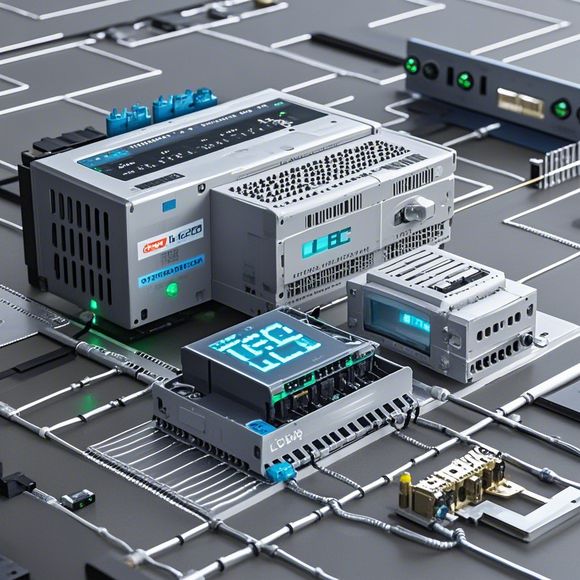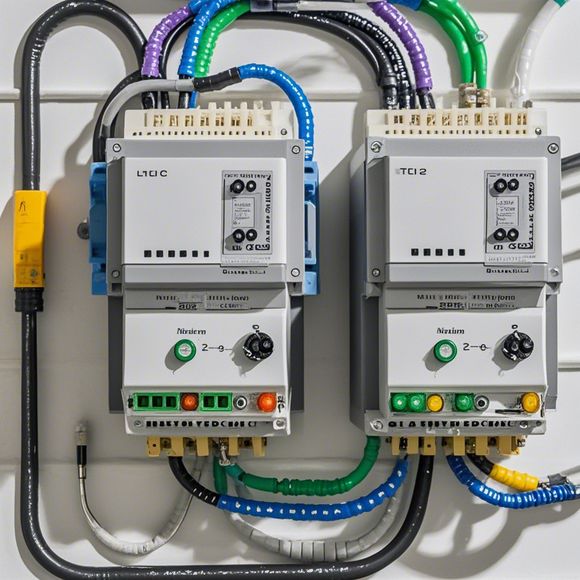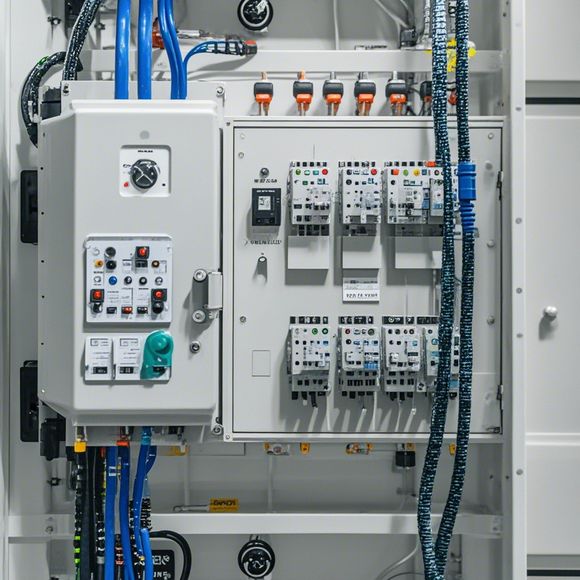Mastering PLCs: A Step-by-Step Guide for Beginners
"Mastering PLCs: A Step-by-Step Guide for Beginners" For beginners looking to master Programmable Logic Controllers (PLCs), this guide offers a comprehensive approach. It starts with a basic overview of what PLCs are and how they function, explaining their role in industrial automation. The guide then moves on to the key components of a typical PLC system, including the hardware components such as the CPU, memory, input/output modules, and software components like Programming Languages and Application Software. The guide provides step-by-step instructions on how to install, configure, and troubleshoot PLC systems, covering topics such as wiring and programming. It also includes tips for selecting the right PLC for a specific application and discussing common issues that arise during installation or operation. This guide is designed to be easy to follow and practical, making it ideal for those new to PLC technology. Whether you're a seasoned engineer or just starting out, this resource will help you effectively manage your PLC systems and ensure optimal performance.
Hello, fellow aspiring engineers and tech enthusiasts! Are you ready to embark on a journey of self-education that will take you from complete novice status to an expert in the field of Programmable Logic Controllers (PLC)? If so, then read on as we dive into the world of PLCs, one step at a time.

First off, don't be afraid to embrace the learning curve. It's not just about memorizing jargon or figures; it's about understanding the fundamentals. So, let's start by breaking down what exactly is a PLC, its functions, and its importance in modern industrial automation.
A PLC, short for Programmable Logic Controller, is essentially an electronic device designed to manage the flow of information within a factory. It takes commands from various inputs and processes them to generate output signals that control physical devices like sensors, motors, switches, and other automation elements. The beauty of a PLC is that it can learn and adapt based on its inputs, making it incredibly versatile and efficient in automating industrial processes.
Now, let's dive deeper into the world of PLCs. What are some of the key features that set them apart from traditional controllers? Well, first up is the ability to program. Unlike fixed hardware systems, PLCs can be programmed with complex algorithms and logic to suit specific needs. This means that even if a process changes over time, the PLC remains highly adaptable and capable of handling it.
Another unique aspect of PLCs is their modular design. Instead of being monolithic, they come in various sizes and configurations that can be easily customized to meet the specific requirements of a particular application. This makes it easier to upgrade or modify the system as the need arises.
Furthermore, PLCs have become incredibly reliable and robust due to advances in microchip technology. Today's PLCs are built to withstand extreme temperatures, shocks, vibrations, and other environmental factors, making them ideal for high-performance applications like chemical processing and heavy machinery operations.
But let's not forget about the convenience factor. With PLCs, you can save a lot of time and effort by programming and configuring the system once, and having it work seamlessly across different machines and environments. This eliminates the need for constant reprogramming and manual adjustments, which can be both time-consuming and error-prone.
Of course, mastering PLCs isn't just about technical skills; there are also soft skills you need to hone. First and foremost, communication skills are crucial. You need to be able to explain complex systems to non-technical colleagues and stakeholders, and vice versa. Additionally, problem-solving abilities are essential because you may encounter unexpected issues while programming or configuring the PLC. Finally, patience is a must because mastering PLCs requires consistent practice and learning.
In conclusion, learning how to use PLCs is an exciting journey that can open doors to new opportunities in industrial automation. Whether you're a beginner or an experienced professional, there's always something new to learn and achieve. So grab your pencils and papers, and let's dive into the fascinating world of PLCs together!

Content expansion reading:
Content:
Hey there! So, you're looking to get into PLC programming, but you don't know where to start? No worries, you've come to the right place. I'm here to guide you through the basics of PLCs and help you kickstart your learning journey. Let's dive in!
First things first, what is a PLC? PLC stands for Programmable Logic Controller. It's a type of industrial computer designed to control and automate various machines and processes. PLCs are used in manufacturing, assembly lines, and any other industry where automation is key.
Now, let's talk about why you might want to learn PLC programming. For one, it's a highly in-demand skill in the manufacturing sector. PLCs are everywhere, and someone who can program and maintain them is always going to be needed. Plus, it's a great way to get into the world of automation and control systems.
So, you're ready to start learning. Where do you begin? Well, the first step is to get your hands on some PLC hardware. You don't need the latest and greatest model; in fact, a simple, entry-level PLC will do just fine for learning purposes. Make sure you get one that comes with software for programming and simulation.
Once you have your PLC, it's time to familiarize yourself with the basics of ladder logic. Ladder logic is the most common programming language for PLCs, and it's actually quite intuitive. It's based on the idea of relay logic, which is something you can visualize and understand even if you have no prior programming experience.
To get started with ladder logic, you'll want to learn about inputs and outputs, contacts and coils, and how to create simple logic sequences. These are the building blocks of PLC programming, and they're not as complicated as they sound. With a bit of practice, you'll be able to wire up your first program in no time.

As you progress, you'll start to learn about more advanced concepts like timers, counters, and functions. These will allow you to create more complex and sophisticated programs that can handle a variety of tasks.
One of the best ways to learn is by doing, so don't be afraid to jump in and start programming. Even if your first few attempts don't work as expected, that's part of the learning process. The key is to keep at it and learn from your mistakes.
Another tip is to find a mentor or join a community of PLC programmers. Having someone to guide you and answer your questions can make a huge difference in your learning speed. Plus, you'll get to network with professionals in the field, which can open up opportunities down the line.
Lastly, don't forget to have fun with it! Learning PLC programming can be a rewarding experience, both personally and professionally. As you become more proficient, you'll be able to automate real-world processes and see the direct impact of your work.
So, there you have it. A brief overview of what PLC programming is and how to get started. Remember, it's a journey, not a race. Take your time, be patient with yourself, and before you know it, you'll be programming PLCs like a pro. Good luck, and happy learning!
Articles related to the knowledge points of this article:
PLC Controller Wiring Guideline
PLC Programming for Automation Control in the Manufacturing Industry
Plumbers Rule! The Role of PLC Controllers in the World of Waterworks
Connecting a PLC Controller to Your Computer
PLC Controllers: A Comprehensive Guide to Understanding Their Prices